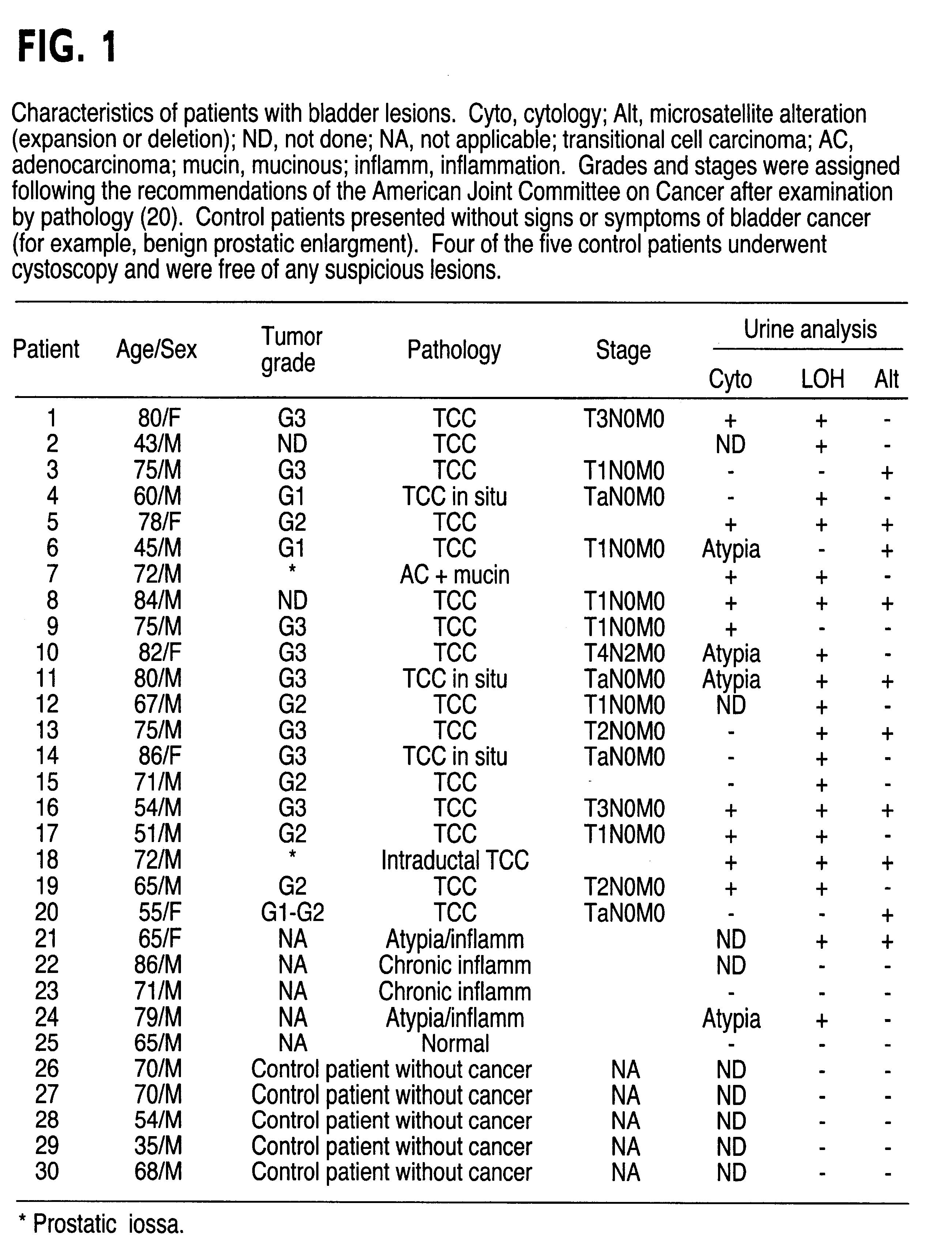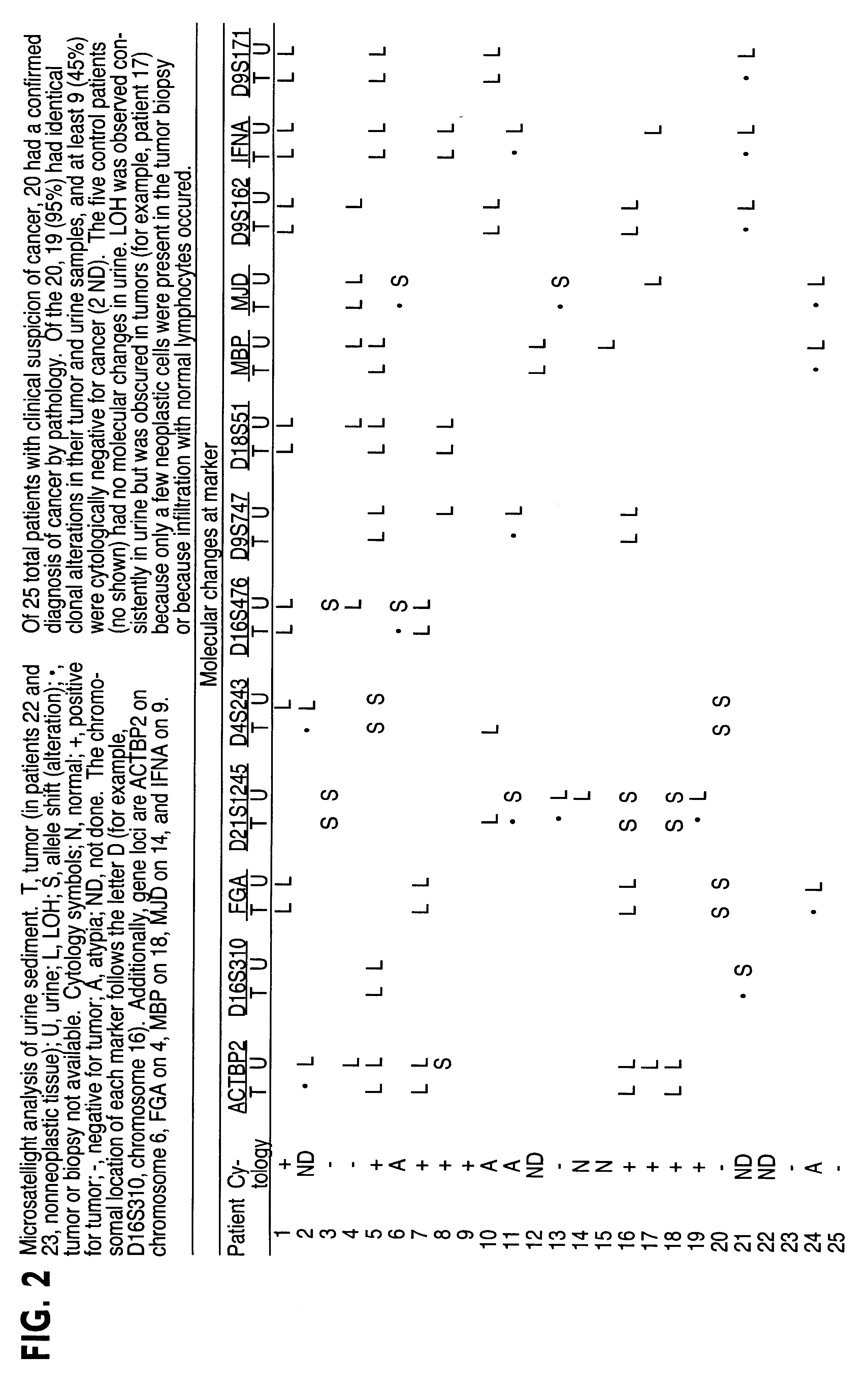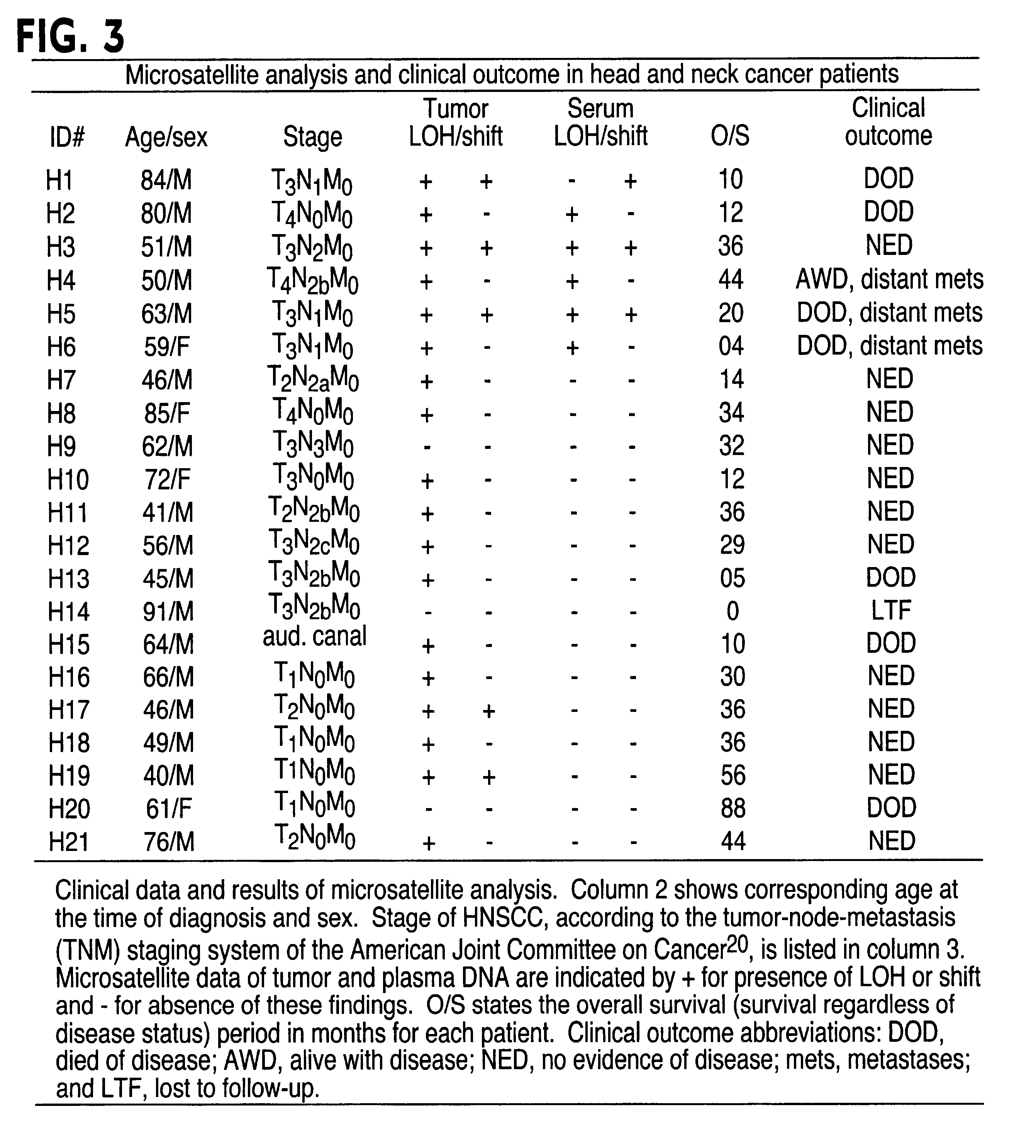Method for detecting cell proliferative disorders
a cell proliferative disorder and cell technology, applied in the field of cell proliferative disorders, can solve the problems of difficult detection and treatment of bladder cancer, high cost and invasive procedures, and achieve the effects of facilitating the use of non-radioactive probes or labels, and increasing the copy number of target nucleic acids
- Summary
- Abstract
- Description
- Claims
- Application Information
AI Technical Summary
Benefits of technology
Problems solved by technology
Method used
Image
Examples
example 2
Microsatellite DNA Alterations in Serum DNA of Head and Neck Cancer Patients
The purpose of this Example is to show that microsatellite DNA analysis of serum represents a novel method for the detection of circulating tumor cell DNA. Lymphocyte, serum and tumor DNA were retrospectively analyzed from twenty-one head and neck cancer patients. Head and neck cancer remains a morbid and often fatal disease. Large tumor bulk and tumor extension are predictors of local regional recurrence and poor outcome. Molecular detection of occult neoplastic cells in surrounding surgical margins is a strong predictor of local regional recurrence resulting in a significant decrease in overall survival. In this Example, twenty-one patients were followed from initial diagnosis of transitional cell carcinoma with microsatellite DNA analysis of urine DNA at the time of cystoscopic evaluations scheduled at routine intervals. In almost all cases, DNA-based analysis correlated precisely with clinical findings a...
example 3
Detection of Bladder Cancer Reoccurrence by Microsatellite DNA Analysis of Urine
The purpose of this Example was to demonstrate that the microsatellite DNA analysis method can be used for following-up patients with transitional cell carcinoma. A reliable, non-invasive method for monitoring patients with transitional cell carcinoma of the bladder would be of great clinical benefit. In this Example, serial urine samples were tested from twenty-one patients who had been treated for bladder cancer with twenty polymorphic microsatellite DNA markers in a blinded fashion. Recurrent lesions were detected in ten out of eleven patients and correctly predicted the existence of a neoplastic cell population in the urine of two patients, four and six months before cystoscopic evidence of the tumor. The assay was negative in ten of ten patients who had no evident cancer. This Example shows that microsatellite DNA analysis of urine sediment represents a novel and potentially powerfuil clinical tool ...
example 4
Analysis of Saliva in Cases of Head and Neck Cancer
One hundred and five incrosatellite DNA markers were screened in primary lung, and head and neck cancer, to find those most amenable to microsatellite DNA shifts. The eight best markers show the highest frequency of these shifts. These were tested in twenty-one paired samples of tumor and saliva in patients with head and neck cancer. The saliva samples were obtained by both swabbing and rinsing the mouth of the affected patients. In summary, fifteen out of the twenty-one cancer cases with just these eight markers were detected. In eight of these cases, a new allele or shift was identified in both a tumor and saliva, three patients in which there was both loss of heterozygosity and instability in the saliva and tumor, and four additional patients which showed only loss of heterozygosity in both the tumor and in the saliva with these markers. In addition, twenty-two control samples were tested of patients without cancer and found none...
PUM
| Property | Measurement | Unit |
|---|---|---|
| temperatures | aaaaa | aaaaa |
| temperatures | aaaaa | aaaaa |
| temperatures | aaaaa | aaaaa |
Abstract
Description
Claims
Application Information
 Login to View More
Login to View More - R&D
- Intellectual Property
- Life Sciences
- Materials
- Tech Scout
- Unparalleled Data Quality
- Higher Quality Content
- 60% Fewer Hallucinations
Browse by: Latest US Patents, China's latest patents, Technical Efficacy Thesaurus, Application Domain, Technology Topic, Popular Technical Reports.
© 2025 PatSnap. All rights reserved.Legal|Privacy policy|Modern Slavery Act Transparency Statement|Sitemap|About US| Contact US: help@patsnap.com



